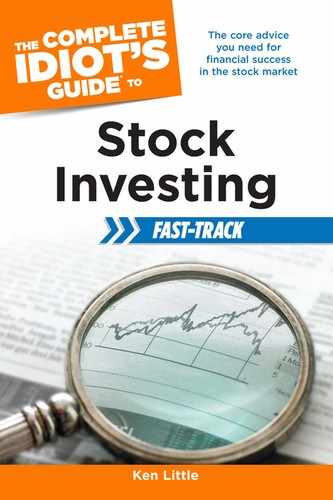There are two major types of stock market risks for stock investors: systematic and nonsystematic risks. It is important that you understand that your stocks may go down in price based on risks you have no control over. However, even though you don’t have control of these risks, you can prepare for them and provide some protection for your portfolio.
The other major type of risk to your portfolio is when you make unwise investment decisions, such as not doing your homework, paying too much for stock, investing on a tip, and so on.
Systematic risks are those issues that affect the stock market and/or the economy. These types of risk generally hurt all types of stocks, although some stocks may be more susceptible to some risks than others are. Systematic risks include the following:
Economic risk. One of the most obvious risks of investing is that the economy can go bad. Following the market bust in 2000 and the terrorists’ attacks in 2001, the economy settled into a sour spell. A combination of factors saw the market indexes lose significant percentages. It took years to return to levels close to pre-9/11 marks, only to have the bottom fall out again in 2008 and 2009 during the financial crisis.
Inflation risk. Inflation is the tax on everyone. It destroys value and creates recessions. Inflation is when too much money chases too few goods. The result is sharply rising prices that are not matched by increases in consumer income. This devalues money. Historically, stocks have been a good hedge against inflation because companies can raise prices and pass them on to consumers. However, if consumers slow their buying, companies have too much inventory and begin closing manufacturing and retail facilities. The resulting slowing of the economy hurts company value and stock prices decline. Often a recession follows periods of high inflation.
Market value risk. Market value risk refers to what happens when the market turns against or ignores your investment. It also happens when the market collapses—good stocks as well as bad stocks suffer as investors stampede out of the market. Some investors view it as an opportunity to load up on great stocks at a time when the market isn’t bidding up the price. On the other hand, it doesn’t advance your cause to watch your investment flat-line month after month while other parts of the market are going up.
Geopolitical risk. We live in a global market. Political changes in other countries can adversely affect the U.S. markets. Most of the companies in the S&P 500 Index (the top 500 U.S. companies) make a substantial portion of their sales in countries other than the United States. This makes our stock market vulnerable to political or economic unrest with our global trading partners.
Nonsystematic risks are those particular to a company or a small group of companies rather than the whole stock market. You can’t protect yourself completely from these risks; however, considering the quality of management in your evaluation may help to minimize the risks, as well as build a diversified portfolio. Examples of nonsystematic risks include the following:
Poor management decisions. Managing a business is a complex job, and the larger the business, the more complex decision-making becomes. A very real risk is that managers will make poor decisions and those decisions will decrease the value of the company. Most managers act in good faith and believe they are doing what is best for the company and its stockholders. However, managers sometimes just get it wrong and other times act out of motives that are not in the best interest of the company or the stockholders. Spending time reviewing the key managers is an important part of evaluating a company.
Narrow sector factors. Sometimes an economic or market blip will hit a narrow sector of stocks. An example of this is when many years ago, the government imposed a steep tax on luxury items. Almost overnight the luxury boat-building industry in the United States dipped dramatically. Another time during a domestic oil boom, the government imposed an excessive profits tax at the wellhead. You can imagine how that affected oil producers. Sometimes the problem is the result of unintended consequences. The market for inexpensive point-and-shoot digital cameras continues to suffer as more consumers buy smart phones, which all have built-in cameras.
| STOCK TIP |
The best protection is a portfolio with the appropriate ratio of stocks, bonds, and cash. I’ll focus on the stock portion of that equation. Some systematic and nonsystematic risks have no protection from the portfolio losses they cause. A major recession like the one that began in 2008 is probably going to hurt every stock you own. However, there are steps you can take to reduce or minimize losses from these risks.
Don’t invest all of your capital in the same stock sectors, and diversify by size. Own some (not more than 10 percent) foreign stocks to help offset problems caused in the domestic economy.
I discuss building portfolios that vary from aggressive to conservative in Chapter 9. These strategies will help you avoid some of the market risks facing all stock investors.
